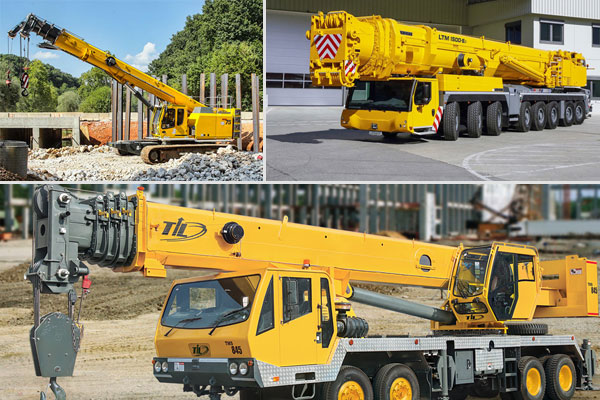Mobile cranes are cable-controlled cranes mounted on crawlers or rubber-tired carriers or a hydraulic-powered crane with a telescoping boom mounted on truck-type carriers or as self-propelled models. Mobile cranes generally operate a boom from the end of which a hook is suspended by wire rope and sheaves. The wire ropes are operated by whatever prime movers the designers have available, operating through a variety of transmissions. Mobile crane manufacturers are designing cranes that can address the complexity of urban development sites. Different types of mobile serves varied purposes.
Given below are different types of mobile cranes used in construction.

Truck-mounted mobile crane
Truck-mounted cranes are widely used in a variety of construction projects. In this type of mobile cranes, industrial sensors must be able to survive the heavy shock, vibration, weather, and temperature conditions when installed on truck-mounted cranes. Modern machines predominantly have telescopic booms, although they are also available with lattice booms. They are designed to travel on public highways and are often based on, or mounted on commercially available truck chassis. They are powered by a diesel engine and employ hydraulic systems to drive the boom and lifting gear. The powerful, long telescopic booms can reach great working heights quickly and easily. Flexibility is the highest priority for the equipment – the right crane for every job can be configured quickly using functional lattice extensions, folding jobs, fixed and luffing lattice jobs.

Sidelifter mobile crane
Modern Sidelifter mobile crane is designed with versatility in mind and is available with a lifting capacity of 25, 36, or 40 tonnes. It is the lightest Side loader in its class, with a tare weight starting at 8,0 tonnes with 20’-40’ capacity, 3 axles and 36 tonnes SWL. The support legs are extending and tilting, making their positioning very versatile. An excellent quality when you have a wide range of different operations. The support legs operate from a high position relative to the chassis, meaning you can more easily place the support legs on top of a higher companion chassis or rail wagon. Newer hybrid models are excellent for both ground-level lifts and transferring to/from another chassis.
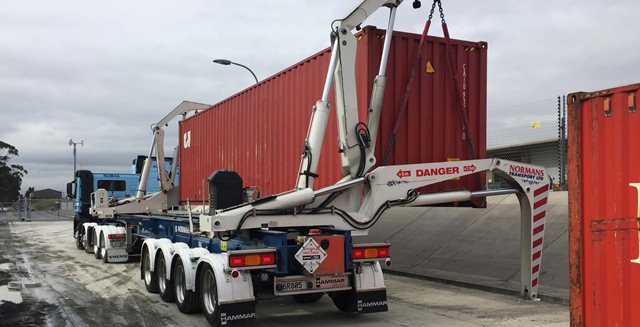
All-terrain mobile crane
An all-terrain crane is considered the luxury version of a mobile hydraulic crane. All-terrain cranes are essentially a hybrid between a mobile truck crane and a rough terrain crane. Modern models have capacity ranges from 40 to 1,000 tons and reach heights of up to 500 feet offering both power and precision. It is built to handle tough job site conditions, while at the same time providing comfort and ease for operators. This allows them to work more effectively for longer days with less fatigue. Even though all-terrain cranes are compact, they still offer exceptional visibility from the cab to help operators have a full view of the work area. All-terrain cranes are some of the largest, most mobile cranes available today. They combine the best of both worlds: the mobility of truck-mounted cranes and the maneuverability of rough terrain cranes. Generally, the all-terrain crane has a four-wheel-drive system and is powered by one or two engines. The all-terrain crane uses a hydraulically powered telescopic boom as the main lifting mechanism.
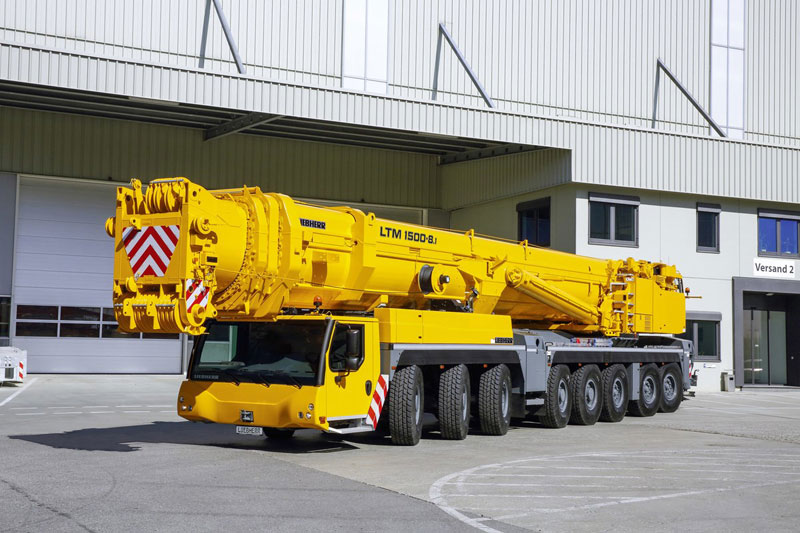
Rough terrain mobile crane
Rough terrain mobile crane is compact and highly maneuverable with robust construction and high torque multiplicity, which make them performance-worthy for rough terrains and applications. They are more compact than most other types of off-road cranes, which means that they can get into tighter spaces. Outriggers provide stability for lifting operations and, by using a hydraulic boom and hoist, rough terrain cranes can lift heavy loads to exceptional heights. Most rough terrain cranes have 4-wheel drive to better navigate off-road. Modern models have the highest possible level of standard safety features available on a rough terrain crane. New models are simplified fly assembly with new ground-level carrier controls. One control raises and lowers the boom angle from 0 to -3 degrees, and another control is used for the fly assist cylinder. The crane has a new winch design with ultra-wide drums designed to provide increased line pull at higher working layers. The maximum winch line pull is 23,632 lb. (105.1 kN).
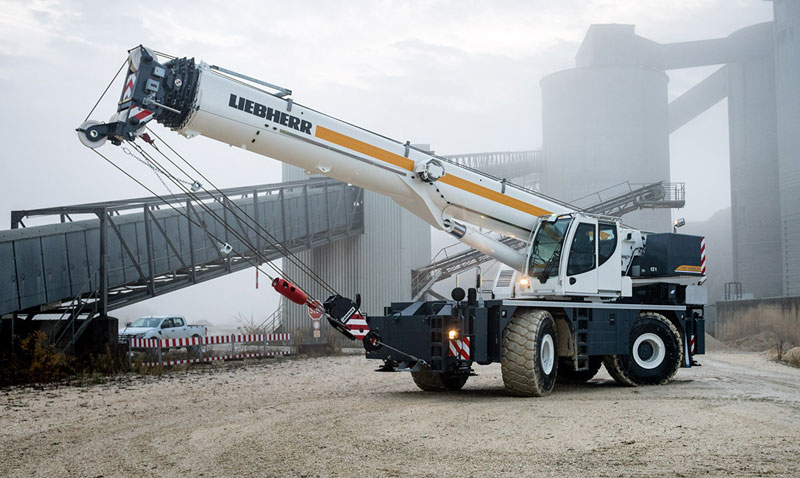
Telescopic handler mobile crane
In industry, the most common attachment for a telehandler is pallet forks and the most common application is to move loads to and from places unreachable for a conventional forklift. For example, telehandlers can remove palletized cargo from within a trailer and place loads on rooftops and other high places. The latter application would otherwise require a crane, which is not always practical or time-efficient. Modern telescopic handler mobile cranes offer a robust solution for handling suspended loads of up to 6 000 kilograms. This telehandler crane attachment is fitted with 2 hooks to meet the various handling requirements of building sites and industrial applications. Designed for a 2-forward reach, this crane offers more flexibility when performing daily handling tasks.
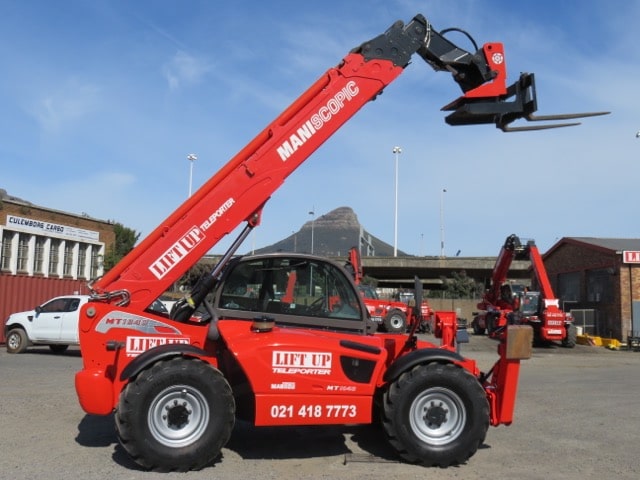
Crawler mobile cranes
Crawler mobile cranes are ideal for traveling on public roads and for off-road use due to their all-terrain chassis. They feature safety, economy and comfort. With a range of around 25 LTM cranes, from a small two-axle to the large 9-axle model, there are right crane models to suit every requirement. Modern crawler cranes are used on soft ground for erection and maintenance work. Crawler cranes are similar to Hydraulic Excavators in traction and swing the load through 360 degrees. Machine stability is achieved by the tracks and there is no need for outrigger stabilization. The basic advantage of the crawler crane is that it is quick in operation on soft ground, compared to other classes of cranes.
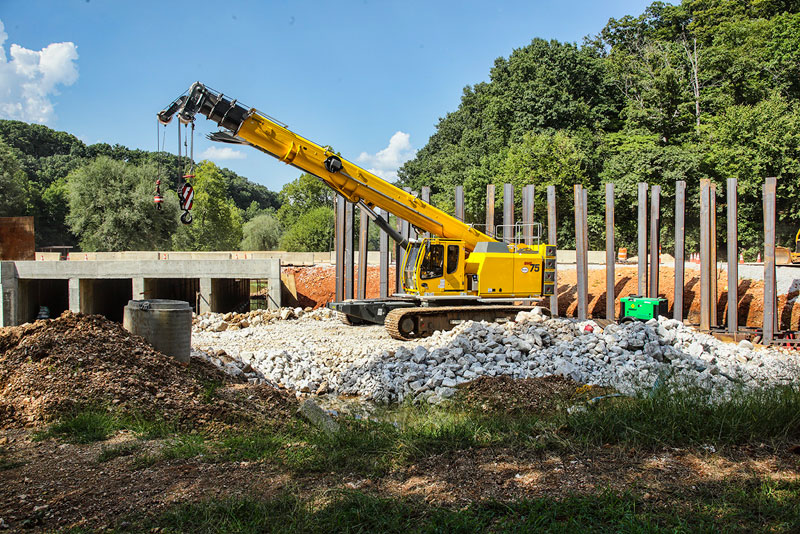
Stiff boom mobile crane
Stiff boom mobile crane work by using a hydraulic winch which is raised or lowered by the boom to lift materials. To move materials from one location to the next, the crane operator can rotate the boom of the crane, extend it, and raise or lower it to achieve the right lifting height. Since stiff boom cranes can only lift materials straight up and down, it is the ideal choice for gently placing loads on the worksite, no matter the lifting radius, as well as to suspend heavy loads in the air for long periods with little to no drift. In modern models stiff boom cranes are available from 14 tons to 40 tons with payload capacities up to 37,000 lbs, renting the right size crane for your job site has never been easier.

Folding boom mobile crane
Folding boom crane has two booms (main boom and an outer boom), which are attached by knuckle that allows the entire boom structure to move in and out, just in the same way our knuckles move the sections of our fingers. This movement allows a knuckle boom crane to fold into a very small size when transporting materials or squeezing into a small construction site. The mobility of a folding crane also allows an operator to clear the payload off their deck. You can effectively load and unload your truck, and then use the crane’s reach and strength to lift the materials to the required location onsite. Modern machines offer multiple attachments.
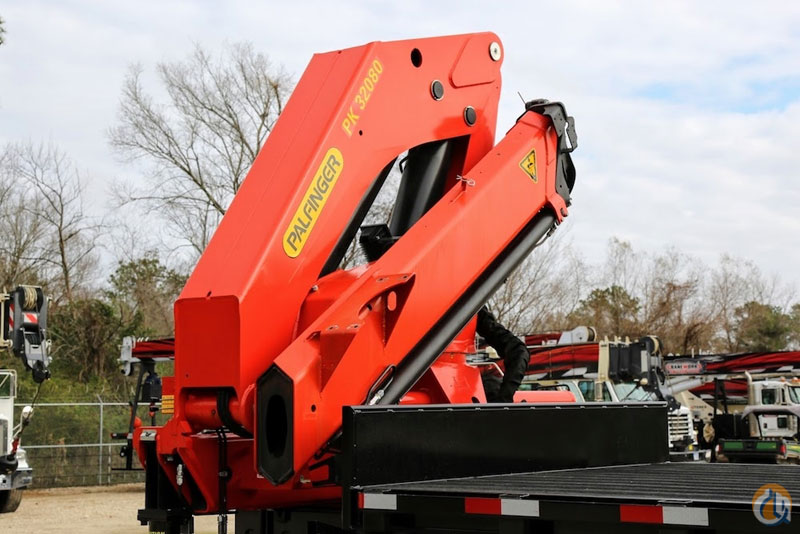
Conclusion
One of the biggest benefits mobile cranes have to offer is their level of flexibility and movability, especially in situations where multiple obstructions are present. Mobile cranes can be used to access narrow passages and sites that have limited space, making them a practical solution for many job sites. More modifications are being done in modern cranes to cater to even the most difficult job site works.
Image Source: tilindia.in, sanyglobal.com, gruasyaparejos.com, liebherr.com, manitowoc.com, liftup.capetown


